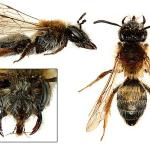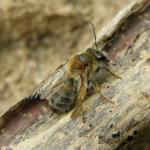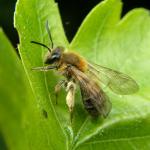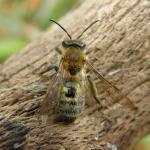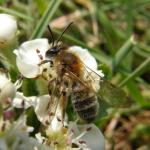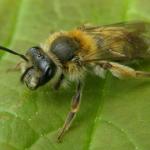Apis helvola Linnaeus, 1758, Melitta subdentata Kirby, 1802, Andrena helvola concolor_homonym Blüthgen, 1919
This large Andrena is one of a group of three (A. helvola, A. fucata Smith and A. synadelpha Perkins) which are quite similar in appearance, phenology and habitat preferences (all found most often associated with clearings in deciduous woodland during May and June). The males are often seen visiting the flowers of wood spurge, the females at those of hawthorn and field maple. Females of all species have gasters which sport bands of brown pubescence, differing mostly in the density of the hairs.
This species is widely distributed in England and the south coast of Wales. There are several modern records from Scotland and it should be sought elsewhere in this country. It is unknown from Ireland.
It is widely distributed in Europe.
This species is not regarded as being scarce or threatened.
Most often found in deciduous woodland on a variety of soil types.
April to June.
A solitarily nesting species.
A wide variety of flowers are visited, perhaps more often the following: wood spurge, field maple, hawthorn and holly.
Nomada panzeri Lepeletier has been recorded as a cleptoparasite. Stylopised males have
been found on several occasions (G R Else and M Edwards, pers. obs).
2012


